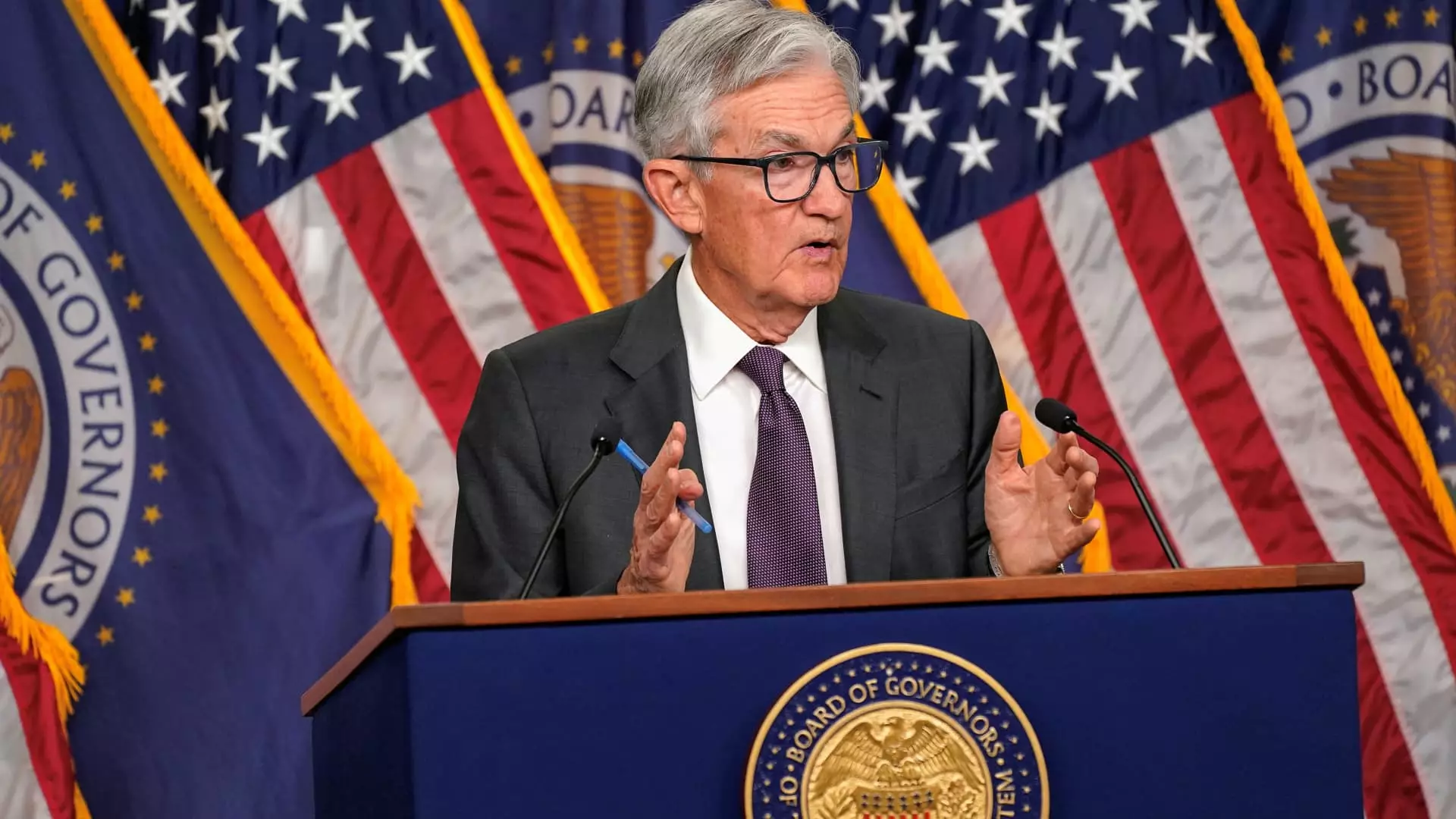In the face of looming economic uncertainty, the Federal Reserve’s latest decision to maintain benchmark interest rates and signal potential reductions later in the year has sparked mixed reactions. While the Federal Open Market Committee (FOMC) opted to hold the target range between 4.25% and 4.5%, this move comes amid rising concerns regarding the effects of tariffs on an already slowing economy. The decision appears more reactionary than strategic, suggesting a lack of cohesive long-term planning. By treading water rather than making bold decisions, the Fed might be ignoring the pressing economic issues surrounding consumer spending, tariffs, and inflation expectations.
The Federal Reserve’s hesitation to implement immediate changes highlights its indecision regarding the economic landscape. Chair Jerome Powell stated, “If the economy remains strong, and inflation does not continue to move sustainably toward 2%, we can maintain policy restraint for longer.” Such statements suggest an unwillingness to take decisive actions, and it raises questions about the Fed’s commitment to fostering a robust economic environment.
Tariffs as an Economic Wild Card
The ambiguity regarding President Trump’s tariffs complicates the Fed’s decision-making process further. While tariffs are intended as a means to protect American industries, they paradoxically stifle consumer confidence, leading to a contraction in spending. Despite recent upticks in retail spending, analysts express skepticism about the sustainability of this trend, especially when corrosive tariffs loom heavily over economic forecasts.
The FOMC’s acknowledgment of heightened uncertainty indicates an administration caught in a whirlwind of policy contradictions. As tariffs increase costs across various sectors, consumers find themselves in a perpetual state of wariness, resulting in inflation expectations that could become self-fulfilling. The Fed needs to recognize this perilous trap of rising prices driven by government policy and must act swiftly to protect consumer interests.
The Illusion of Stability
With the Fed clinging to its existing interest rate strategy, market reactions paint an ironically optimistic picture. Following the announcement, the stock market surged, suggesting a misalignment between Wall Street’s hopes and Main Street’s harsh realities. Surely, investors are looking for signals to maintain their faith in the market; however, interpreting this market enthusiasm as a sign of economic recovery is dangerously misleading. The reality remains that the economic foundations are unstable, teetering on a precarious edge defined by high inflation rates and sluggish growth.
The revised economic growth projection of merely 1.7% heightens concern and illustrates the fragility of the current situation. If the economy continues to decelerate, the Fed’s retained policy could backfire. By focusing too extensively on temporary gains, the central bank may inadvertently contribute to deeper instability in the long run—failing to deliver the robust economy certain policymakers tout.
Indecisiveness in Economic Strategy
Among the FOMC members, there’s a growing cacophony of opinions—a tug-of-war between cautious optimism and unyielding pessimism. Fed Governor Christopher Waller’s dissenting vote serves as a reminder that not all members share the same outlook on interest rates, signaling a leadership struggling to project a unified strategy. By hinting at future cuts while simultaneously adjusting their quantitative tightening plan, the Fed is sending mixed messages to both consumers and markets.
This indecisiveness could lead to deterioration in public trust. Consumers rely on the Fed to stabilize their financial environments; uncertainty breeds anxiety, and policymakers must grasp this to keep the economy on an upward trajectory. Adopting a more coherent vision for fiscal policy that factors in both short-term challenges and long-term goals is essential for rebuilding credibility.
Looking Ahead: A Precarious Political Climate
The volatile political landscape adds another layer of complexity to the Federal Reserve’s agenda. With Trump’s tariffs creating a chaotic backdrop, consumer sentiment has faltered, reinforcing a climate of unpredictability. The market reacts not just to the Fed’s actions but to political maneuverings that have tangible effects on day-to-day economic realities.
Investors and consumers alike are understandably wary, creating a paradox where reduced confidence hampers economic growth. For the Fed to rise above these challenges, a proactive approach to communication and policy adjustments must become the new norm. As the horizon grows ever cloudier with trade tensions and fiscal anomalies, policymakers must break free from past reluctance and embrace the moment with bold strategies tailored to a 21st-century economy.
The choices made today will echo for years to come, and it’s time the Federal Reserve acknowledges that indecision in stormy waters can lead to capsizing, rather than just drifting aimlessly.

